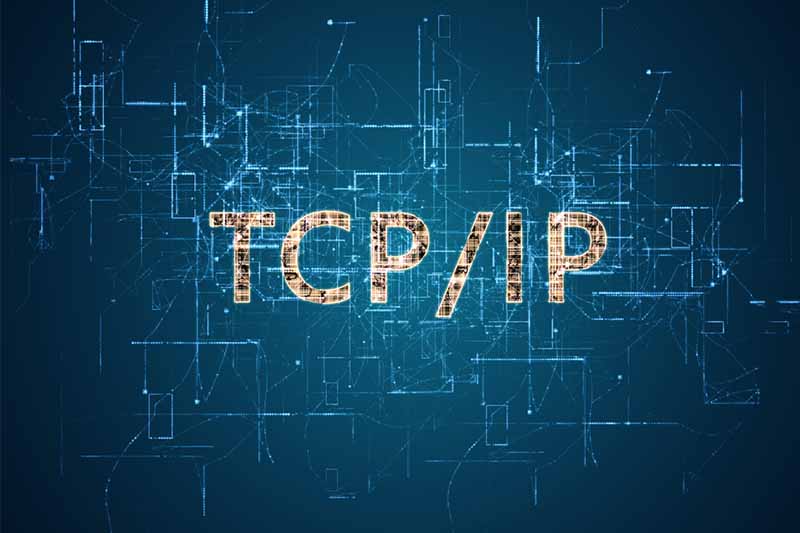40 Network Protocol Names And Port Numbers With Their Transport Protocols And Meanings tabulated by Precious Ocansey (HND, Network Engineer).
Before going straight to the table.
Firstly, what are Network Protocols?
Network protocols are the languages and rules used during communication in a computer network. There are two major transport protocols namely;
TCP and UDP
TCP which stands for “Transmission Control Protocol”, is a suite of communication protocols used to interconnect network devices on a local network or a public network like the internet. TCP is known as “connection-oriented” protocols as it ensures each data packet is delivered as requested. Therefore, TCP is used for transferring most types of data such as webpages and files over the Internet.
UDP which stands for “User Datagram Protocol” is part of the TCP/IP suite of protocols used for data transferring. UDP is a known as a “connectionless-oriented” protocol, meaning it doesn’t acknowledge that the packets being sent have been received. For this reason, the UDP protocol is typically used for streaming media. While you might see skips in video or hear some fuzz in audio clips, UDP transmission prevents the playback from stopping completely.
Furthermore, TCP also includes built-in error checking means TCP has more overhead and is therefore slower than UDP, it ensures accurate delivery of data between systems. Therefore TCP is used for transferring most types of data such as webpages and files over the local network or Internet. UDP is ideal for media streaming which does not require all packets to be delivered.
Port Numbers: They are the unique identifiers given to all protocol numbers so they can be accessed easily.
Below is as written by Precious Ocansey. The 40 Network Protocols, their port numbers and their transport protocols
| PROTOCOLS (SERVICE NAMES) | PORTS NUMBERS | TRANSPORT PROTOCOLS | MEANINGS |
| 1.File Transfer Protocol (FTP) | 20 and 21 | TCP | It is a protocol that carries data guarantees that data will be delivered properly. |
| 2.Secure Shell (SSH) | 22 | TCP and UDP | It is a cryptographic network protocol used to secure data communication. |
| 3.Telnet | 23 | TCP | It is the used for remote management protocol for managing network devices. |
| 4.Simple Mail Transfer Protocol (SMTP) | 25 | TCP | It is a communication protocol which is used to transmit email messages over the internet to the destination server. |
| 5.Domian Name System (DNS) | 53 | TCP and UDP | It is used in the performance of one simple task of converting IP address
To domain names that everyone can easily understand. |
| 6.Trivial File Transfer Protocol (TFTP) | 69 | UDP | TFTP is typically used by devices to upgrade software and firmware and that include cisco. |
| 7.Hyper Text Transfer Protocol (HTTP) | 80 | TCP | It is a kind of protocol used to define how data is transmitted and formatted and also used by www as a channel for communication. |
| 8.Dynamic Host Configuration Protocol (DHCP) | 67 and 68 | UDP | It is a kind of service used in the client and server model. |
| 9.Post Office Protocol 3 (POP3) | 110 | TCP | It is a protocol used by e-mail client to retrieve e-mail from the servers. |
| 10.Network News Transport Protocol (NNTP) | 119 | TCP | nntp is an application protocol used for transporting USENET news articles between news servers and the end user client. |
| 11.Network Time Protocol (NTP) | 123 | UDP | It is the synchronization of time between network devices in the network. |
| 12.NetBIOS | 135 and 139 | TCP and UDP | NetBIOS itself is not a protocol but is typically used in combination with IP with the NetBIOS over TCP/IP protocol. |
| 13.Simple Network Management Protocol (SNMP) | 161 and 162 | TCP and UDP | It has the ability to monitor, configure and control network devices. |
| 14.Lightweight Directory Access Protocol | 389 | TCP and UDP | LDAP provides a mechanism of accessing and maintaining distributed directory information. |
| 15.Transport Layer Security (TLS) | 443 | TCP | It is a protocol of a secured socket layer that uses asymmetric keys to transfer data over a network. |
| 16.Real-Time Transport Protocol. (RTP) | 1023 TO 65535 | UDP | It is used for delivering audio and video data over an IP network. |
| 17.Hyper Text Transfer Protocol Secure. (HTTPS) | 443 | TCP | It renders authentication and encryption that provides secure communication with the use of secure socket layer. |
| 18.Internet Message Access Protocol. (IMAP4) | 143 | TCP and UDP | It is an application layer protocol and an internet standards for e-mail retrieval. |
| 19.Address Resolution Protocol (ARP) | 3389 | TCP | It is used to resolve the network layer address into the link address. |
| 20.Border Gateway Protocol (BGP) | 179 | TCP | It is used to maintain very large routing tables and traffic processing. |
| 21.Internet Relay Chat (IRC) | 194 | UDP | It is an application layer protocol that facilitate communication in the form of text. |
| 22.Session Initiation Protocol. (SLP) | TCP and UDP | It is used to establish, modify, and terminate multimedia communication session such as VoIP. | |
| 23.Session Description Protocol.(SDP) | TCP | It describes the content of multimedia communication. | |
| 24.Remote Desktop Protocol. (RDP) | 3389 | TCP | It provides a user with a graphical interface to connect to another computer over a network connection. |
| 25.Server Message Block (SMB) | TCP | It is an application layer protocol that helps in accessing network resources, such as shared files and printers. | |
| 26.Secure File Transfer Protocol (SFTP) | 22 | TCP and UDP | It uses the SSH protocol to access and transfer file over the network. |
| 27.Internet Group Management Protocol (IGMP) | 2 | TCP | It is a communication protocol used by hosts and adjacent routers on IPv4 network to establish multicast group membership. |
| 28.Route Access Protocol (RAP) | 38 | TCP | |
| 29.Resource Location Protocol (RLP) | 39 | TCP | It is used for determining the location of higher level service from host on a network. |
| 30.Host Name Server Protocol (HNSP) | 42 | TCP | |
| 31.Internet Control Messages Protocol (ICMP) | PING | It is used by a ping utility to check the reachability the device in a network. |
| 32.Remote Directory Access Protocol (RDAS) | TCP | It is used retrieves information about domain names from a central registry. | |
| 33.Lightweight Presentation Protocol (LPP) | TCP and UDP | It is describe an approach for providing stream lined support of OSI application services on top of TCP/IP –based network for some constrained environment. | |
| 34.Remote Procedure Call Protocol (RPC) | TCP and UDP | It is a protocol for requesting a service from a program location in a remote computer through a network. | |
| 35.Network Address Translation (NAT) | 3022 | TCP and UDP | It is the method by which IP addresses are mapped from one group to another, transparent to end users. |
| 36.Microsoft Active Directory Protocol (MADP) | 445 | TCP | it is used by Microsoft server operating systems for client/server access and file and printer sharing. |
| 37.Calender Access Protocol (CAP) | 1026 | TCP | It is used by Novell GroupWise for its calendar access protocol and also used by windows task scheduler. |
| 38. Layer Two Tunneling Protocol.(L2TP) | 1701 | TCP | It is used to connect two private business network together over an internet connection to create a virtual network. |
| 39.Point To Point Tunneling Protocol (PPTP) | 1732 | TCP | A tunneling and encryption standard is used to connect two private business network together over an internet connection to create a virtual network. |
| 40.Remote Procedure Call (RPC) | 135 | TCP | It holds information regarding which ports and IP addresses the services are currently running . |
Vinay
Related posts
7 Comments
Leave a Reply Cancel reply
This site uses Akismet to reduce spam. Learn how your comment data is processed.
Subscribe for newsletter
* You will receive the latest news and updates on your favorite topics!
How to Downgrade Flutter Version – FIXED
Learn how to downgrade your flutter version to a lower version, in this article we will reduce the flutter version…
Generate Resources for Android Playstore & iOS Apple Store Flutter
In this post, we’ll generate resources for the flutter app we created in the previous post. we’ll be learning how…
Build a Quiz App using Flutter for Android and iOS
In this post we’ll be working with Flutter, a fast-rising Developer tool built by Google to develop an Android App,…
Setup Flutter on Kali, Ubuntu, and any other Linux Distro
In this post, we’ll be learning how to set up your Flutter on Linux for development. Flutter is a fast-rising…
FIXED xcodebuild: Failed to load code for plug-in – Repeatedly Being Asked to Install Command Line Tools
Hey there, updating your MacOS Montery Xcode can be a pin in the a$$ especially when you got Xcode working…
How to Downgrade Flutter Version – FIXED
Learn how to downgrade your flutter version to a lower version, in this article we will reduce the flutter version…
Build a Quiz App using Flutter for Android and iOS
In this post we’ll be working with Flutter, a fast-rising Developer tool built by Google to develop an Android App,…
Setup Flutter on Kali, Ubuntu, and any other Linux Distro
In this post, we’ll be learning how to set up your Flutter on Linux for development. Flutter is a fast-rising…
Subscribe
* You will receive the latest news and updates on your favorite celebrities!







Good job.interesting more grace sir
Iṣẹ rere, diẹ ẹ sii oore ọfẹ
ICMP does not use any port, 1 is its protocol number.
Updated. Thank you
IGMP does not use a transport layer protocol such as TCP or UD
Updated. Thank you
Nice info!